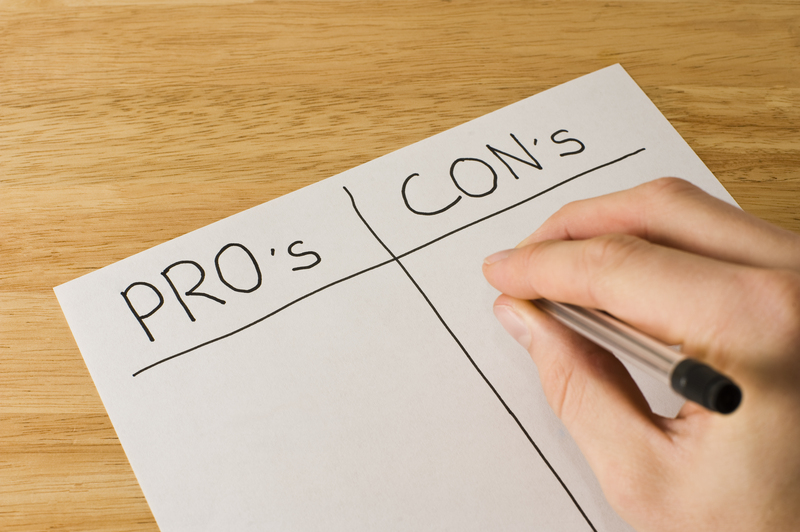Unlock the Secrets to Moving Your Bed and Mattress
Posted on 19/06/2025
Unlock the Secrets to Moving Your Bed and Mattress
Moving to a new home is an exciting but challenging process, especially when it comes to handling large, bulky items like beds and mattresses. Knowing the best techniques and preparing properly can make moving your bed and mattress easy and stress-free. In this comprehensive guide, we will unlock the secrets to moving your bed and mattress efficiently, protect your investment, and minimize physical strain along the way.
Why Proper Bed and Mattress Moving Matters
Your bed is where you spend about a third of your life, and your mattress is one of your most significant investments in comfort and health. Improper moving can damage your mattress or bed frame, void warranties, or even lead to injury. With the right approach, you can avoid these pitfalls and ensure your bed arrives at your new home in pristine condition.
Common Challenges When Moving Beds and Mattresses
- Size and weight: Mattresses are cumbersome and awkward to maneuver.
- Sensitivity: Beds and mattresses are susceptible to tearing, bending, or water damage.
- Narrow spaces: Moving items through stairways and narrow doorways poses a challenge.
- Potential for injury: Lifting heavy furniture without the right technique can strain your back or cause mishaps.
- Disassembly and reassembly: Bed frames often require tools and planning to move efficiently.

Preparation: The Foundation of a Smooth Move
Preparation is the cornerstone of any successful moving endeavor. Follow these steps before you start moving your bed and mattress to ensure efficiency, safety, and protection for your possessions.
Gather Essential Tools and Supplies
Having the right moving supplies on hand will make the job easier and safer. Consider obtaining the following:
- Mattress bags or covers to protect from dirt and moisture
- Moving blankets to prevent scratches or tears
- Furniture sliders for easy movement across floors
- Plastic wrap and packing tape
- Basic tools such as screwdrivers, Allen wrenches, and pliers for bed disassembly
- Labelled plastic bags for hardware (screws, bolts, nuts, etc.)
- Measuring tape to check that both your old and new spaces can accommodate the bed and mattress
- Helpers or professional movers -- never move large items solo if you can avoid it!
Measure Everything
Before you touch a screwdriver or lift your mattress, measure your bed, mattress, doorways, staircases, and hallways at both the old and new locations. This way, you'll know in advance if you need to disassemble furniture or take alternative routes to move your bed and mattress without damaging them or your home.
Clean Ahead of Time
Always clean your mattress and bed frame before moving. This will prevent bringing dust, allergens, or pests to your new home. Use a vacuum cleaner, mild detergent, and let everything completely air-dry.
How to Move a Bed and Mattress Like a Pro
Step 1: Disassembly is Key
Most beds and bed frames are too large to fit through doors or hallways in one piece. Carefully disassemble your bed frame and headboard, keeping all screws, bolts, and small parts in labelled bags. Take pictures of the disassembly process or document where each part belongs -- this makes reassembly much easier.
Step 2: Protect Your Mattress
The right protection is essential for mattress moving. Slide your mattress into a durable, waterproof mattress bag or cover. Secure the bag tightly with packing tape. This keeps it clean, safe from rips, and protects against water damage on rainy days. If you don't have a mattress bag, wrap it generously with moving blankets and plastic wrap.
Step 3: Wrap and Secure Bed Parts
- Headboards and footboards: Wrap with moving blankets and secure with tape or plastic wrap.
- Bed rails, slats, and supports: Bind together, wrap, and label.
- Hardware: Place all small parts in ziplock bags and tape securely to larger components.
This step ensures all parts remain in good condition during the move and makes bed reassembly much more straightforward at your destination.
Step 4: Lifting and Moving Safely
- Use teamwork: Never attempt to move a mattress or a heavy bed frame alone. Enlist friends or hire movers.
- Employ proper lifting technique: Bend your knees, keep your back straight, and lift with your legs.
- Utilize moving straps or dollies: For larger pieces, use lifting straps or furniture dollies for easier handling.
- Slide, don't drag: Where possible, use furniture sliders to prevent damage to floors and decrease friction.
Taking these precautions during the bed and mattress moving process will protect both your back and your belongings.
Transport Tips: Securing Beds and Mattresses in Transit
Whether renting a moving truck or using your own vehicle, proper loading techniques are crucial to avoid damage. Here's how to do it like a pro:
Maximize Space and Prevent Damage
- Place mattress upright: In most cases, it's best to place the mattress on its side, standing upright against the truck wall and secure with straps.
- Avoid placing heavy items on top: Never stack boxes or furniture on a mattress or wrapped bed frame. This can permanently deform the mattress or bend frame parts.
- Cushion with blankets: Use moving blankets to cushion and pad between items.
- Secure everything: Use ratchet straps or ropes to prevent items from shifting during transit.
Special Considerations for Mattress Types
- Memory foam mattresses: Avoid folding or bending. Excess pressure can ruin the foam's shape.
- Innerspring mattresses: Be careful not to deform the springs. Keep upright or flat, never heavily compressed.
- Hybrid or specialty mattresses: Check manufacturer instructions before moving; some models have specific handling guidelines.
Weatherproof Your Move
If rain or snow is in the forecast, double-bag your mattress in waterproof covers. For extra peace of mind, wrap the bed frame and mattress in two to three layers of plastic sheeting.
Unloading and Bed Reassembly: Arriving at Your New Home
Once you've reached your destination, it's important to reverse the process methodically for a perfect setup:
- Unload the mattress carefully, avoiding sharp objects or dragging on rough surfaces.
- Inspect for damage before unwrapping and beginning reassembly.
- Reassemble the bed frame using the photos and labelled hardware bags from earlier.
- Allow the mattress to air out and expand fully before making the bed, especially if it has been bagged or compressed.
- Clean the area before setting the bed in place to ensure no dust from the move affects your sleep environment.
Take your time with reassembly; a sturdy setup is crucial for safety and comfort.

Extra Tips for Moving Your Bed and Mattress
Consider Professional Movers
If you have a particularly heavy bed, a custom mattress, or limited help, hiring professional movers can be a wise investment. Many moving companies offer 'white glove' service, ensuring your bed and mattress are handled with skill and care. This also often includes disassembly and reassembly services.
Don't Forget About Storage
If your move involves temporary storage, choose a clean, climate-controlled facility to prevent mold, mildew, and odor buildup in your mattress and bed frame. Place your mattress flat on a pallet or shelving to avoid warping.
Updating Your Sleep Setup
Moving is an excellent time to reassess your sleep needs. If your mattress is more than 8 years old or causing pain, consider replacing it instead of bringing it to your new home. Likewise, check the bed frame for signs of wear -- a stable foundation can improve sleep quality.
Mattress-in-a-Box: A Modern Solution
If you're buying a new mattress, explore the convenience of mattress-in-a-box delivery. These mattresses come compressed and rolled, making them easy to move and unbox directly in your new space. They're an increasingly popular option for movers looking for convenience without sacrificing comfort.
Frequently Asked Questions about Moving Beds and Mattresses
Can I move a mattress by myself?
While some people manage to move twin or full-size mattresses alone, it's safest and easiest to enlist help. Mattresses are heavy, floppy, and difficult to maneuver, making solo moving risky for both you and the mattress.
Is it okay to fold a mattress to fit it in my car?
Most traditional innerspring and hybrid mattresses should never be folded longer than a few minutes. This can cause springs to deform or internal damage. Only some types of all-foam or latex mattresses can be briefly folded; check with your manufacturer before attempting.
How do I keep my mattress clean while moving?
Always use a mattress bag or cover. These are designed to keep moisture, dirt, and pests out while providing a barrier against tears. Never drag a bare mattress on the ground.
How do I disassemble a bed frame quickly?
- Start by removing the mattress and box spring.
- Work in reverse order from assembly instructions, usually beginning with the headboard and footboard.
- Label all hardware and take pictures to make reassembly easier.
- If lost, many furniture manufacturer websites have downloadable guides for disassembly and reassembly.
What should I do if I can't move the bed or mattress on moving day?
If possible, schedule a later pickup or inquire about professional moving services with flexible scheduling. Renting a larger vehicle or specialized mattress moving service may also solve the problem.
Conclusion: Move Your Bed and Mattress the Smart Way
Successful bed and mattress moving doesn't have to be stressful or damaging. With careful preparation, the right supplies, and a strategic approach, you'll unlock the secrets to moving your bed and mattress quickly and efficiently. Remember:
- Measure and plan every step
- Disassemble and protect all parts
- Use proper lifting and safety techniques
- Consider professional help for complex moves
- Store and unpack with care
Treat your sleeping setup as the crucial investment it is, and you'll enjoy restful nights in your new home from day one. Happy moving!
Ready to move your bed and mattress? With these secrets unlocked, your next relocation will be smooth and worry-free.



